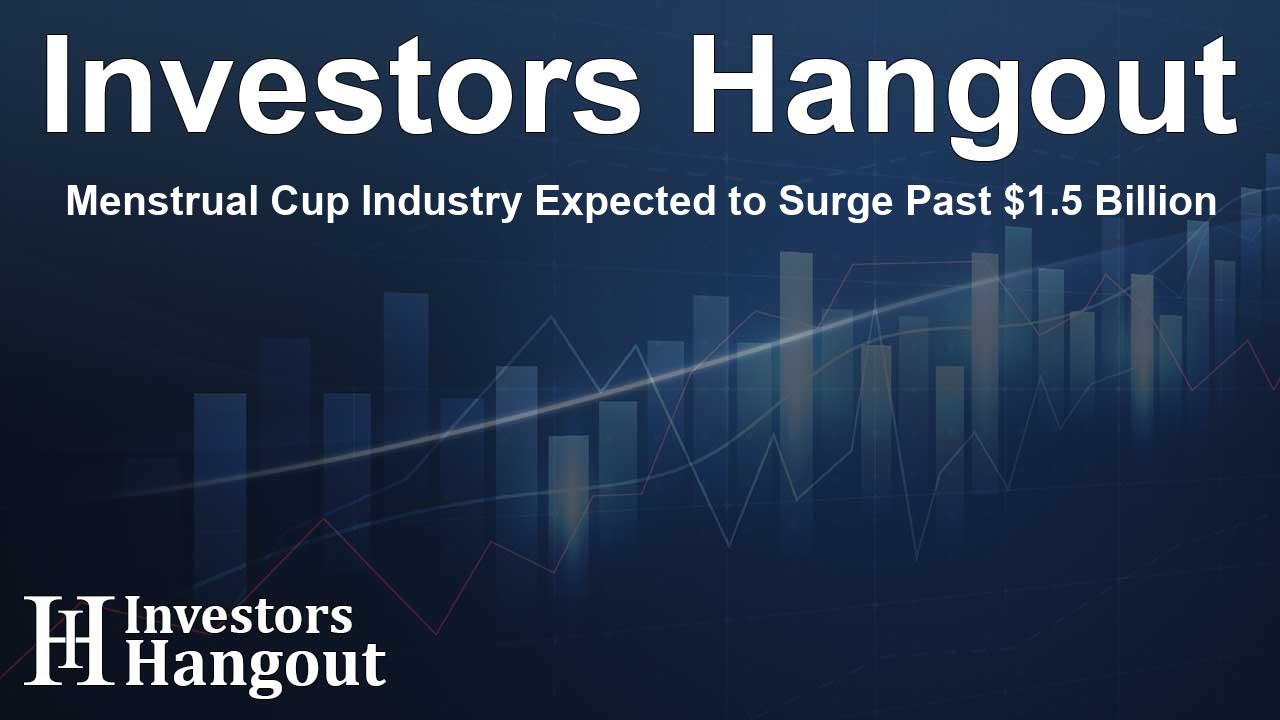Menstrual Cup Industry Expected to Surge Past $1.5 Billion

Understanding the Growth of the Menstrual Cup Market
The global menstrual cup market is on a remarkable growth trajectory, with expectations to reach USD 1562.62 million by the end of a forecast period stretching to 2032. This progress is fueled by a heightened awareness of sustainability and women's health, reflecting the changing preferences of consumers around the world.
Market Size & Growth Insights
The menstrual cup market was valued at USD 890.15 million recently, showcasing an impressive compound annual growth rate (CAGR) of 6.47%. Such figures underline the increasing acceptance of menstrual cups as effective, sustainable alternatives to traditional products like disposable pads and tampons. As more consumers prioritize eco-friendly solutions, the demand for these products is flourishing.
The Benefits of Menstrual Cups
Menstrual cups present several advantages over their disposable counterparts. They are reusable, which contributes to less plastic waste, and are often more cost-effective in the long run. With innovations in materials such as silicone and thermoplastic elastomers, these products are gaining popularity for their comfort and safety. Users appreciate the long-term cost benefits that come with their continued use.
Challenges Facing the Market
Despite the positive trends, the menstrual cup market isn't without its challenges. Certain cultures still harbor taboos related to menstrual hygiene, which can inhibit wider adoption. Furthermore, a lack of awareness about the benefits of menstrual cups remains a hurdle in many regions. To address these issues, manufacturers are focusing on education and accessibility efforts.
Innovations and Product Developments
Recent innovations in menstrual cup design and materials have also played a vital role in this market’s rise. For instance, many companies are investing in research to create softer, more flexible products that enhance the user experience. These advancements are pivotal in swaying consumers who are still accustomed to traditional products.
Regional Trends and Market Drivers
Northern America has been a significant contributor to the growth of the menstrual cup market. The region exhibits high levels of awareness regarding menstrual health, supported by a robust healthcare infrastructure and a community keen on sustainable practices. In parallel, Europe is experiencing a similar trend, as countries like the UK and Germany embrace these products, backed by government policies promoting eco-friendly solutions.
Emerging Markets
The Asia-Pacific region is poised to dominate the market due to a booming interest in menstrual health and government initiatives advocating the use of menstrual cups. Nations like India and China are seeing a shift in consumer behavior, supported by various awareness campaigns and the availability of cost-effective options.
Recent Strategic Initiatives
Various organizations and startups are recognizing the potential in promoting sustainable menstrual health solutions. For example, initiatives to distribute menstrual cups are emerging globally, with projects aimed at reducing plastic use and enhancing hygiene practices. Recent efforts from startups indicate a broader movement towards sustainability, focusing on education and facility improvements in underserved areas.
Future Outlook
The menstrual cup market is poised for notable growth, driven by increasing consumer awareness, innovative product developments, and supportive governmental policies. As environmentally conscious consumers continue to prioritize sustainability, the market is predicted to achieve significant milestones in the coming years.
Frequently Asked Questions
What is driving the growth of the menstrual cup market?
Increased awareness of sustainable health products and changing consumer preferences towards eco-friendly options drive the growth of the menstrual cup market.
How much is the menstrual cup market projected to be worth by 2032?
The menstrual cup market is expected to reach approximately USD 1562.62 million by the year 2032.
What are the main advantages of using menstrual cups?
Menstrual cups offer benefits such as reusability, cost-effectiveness over time, and a lower environmental impact due to reduced plastic waste.
What challenges does the menstrual cup market face?
Hurdles include cultural taboos surrounding menstruation, lack of awareness, and accessibility issues in various regions.
Which regions are the largest markets for menstrual cups?
Regions such as North America and Europe are currently leading the market due to higher levels of consumer awareness and supportive policies towards sustainable practices.
About The Author
Contact Evelyn Baker privately here. Or send an email with ATTN: Evelyn Baker as the subject to contact@investorshangout.com.
About Investors Hangout
Investors Hangout is a leading online stock forum for financial discussion and learning, offering a wide range of free tools and resources. It draws in traders of all levels, who exchange market knowledge, investigate trading tactics, and keep an eye on industry developments in real time. Featuring financial articles, stock message boards, quotes, charts, company profiles, and live news updates. Through cooperative learning and a wealth of informational resources, it helps users from novices creating their first portfolios to experts honing their techniques. Join Investors Hangout today: https://investorshangout.com/
The content of this article is based on factual, publicly available information and does not represent legal, financial, or investment advice. Investors Hangout does not offer financial advice, and the author is not a licensed financial advisor. Consult a qualified advisor before making any financial or investment decisions based on this article. This article should not be considered advice to purchase, sell, or hold any securities or other investments. If any of the material provided here is inaccurate, please contact us for corrections.
